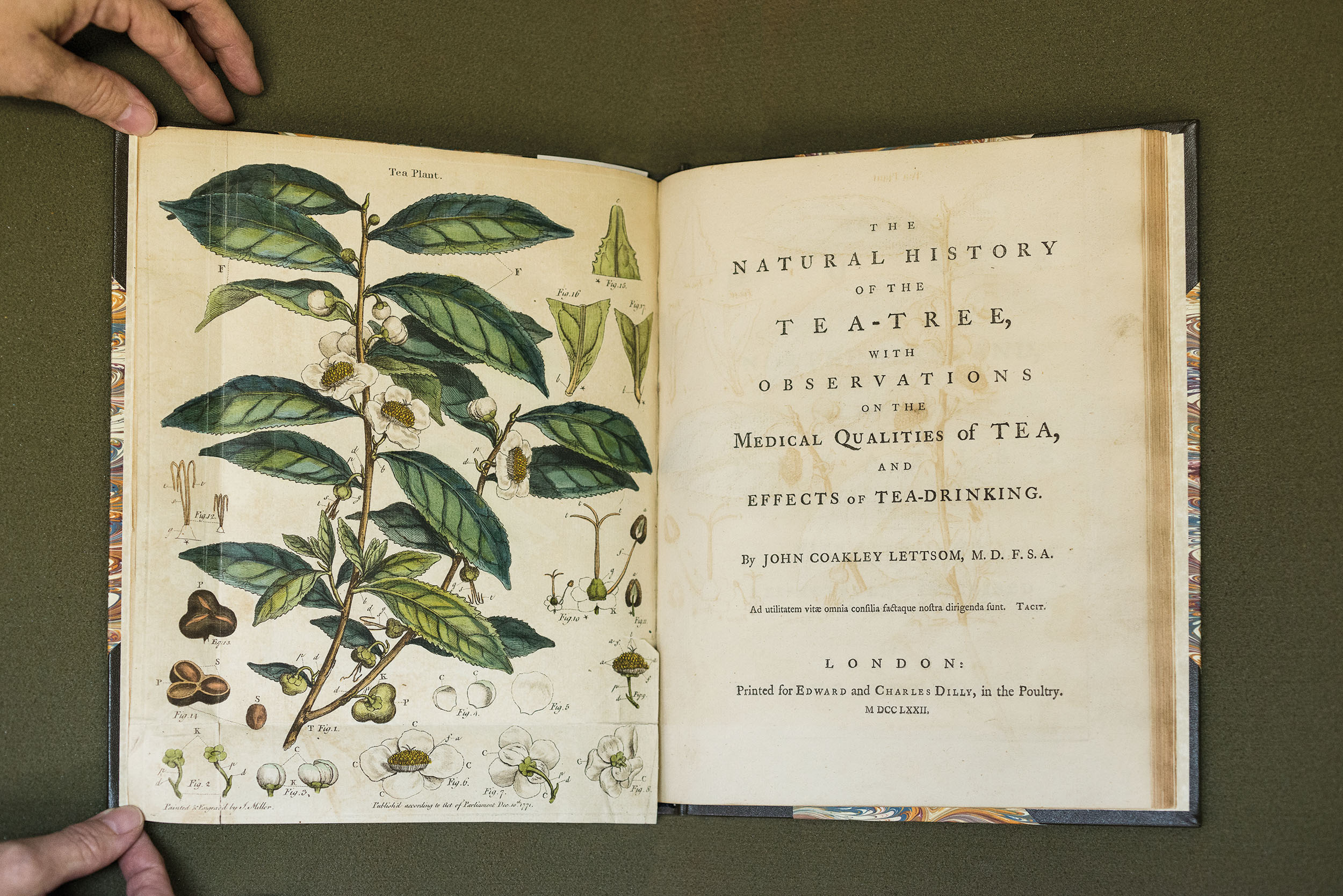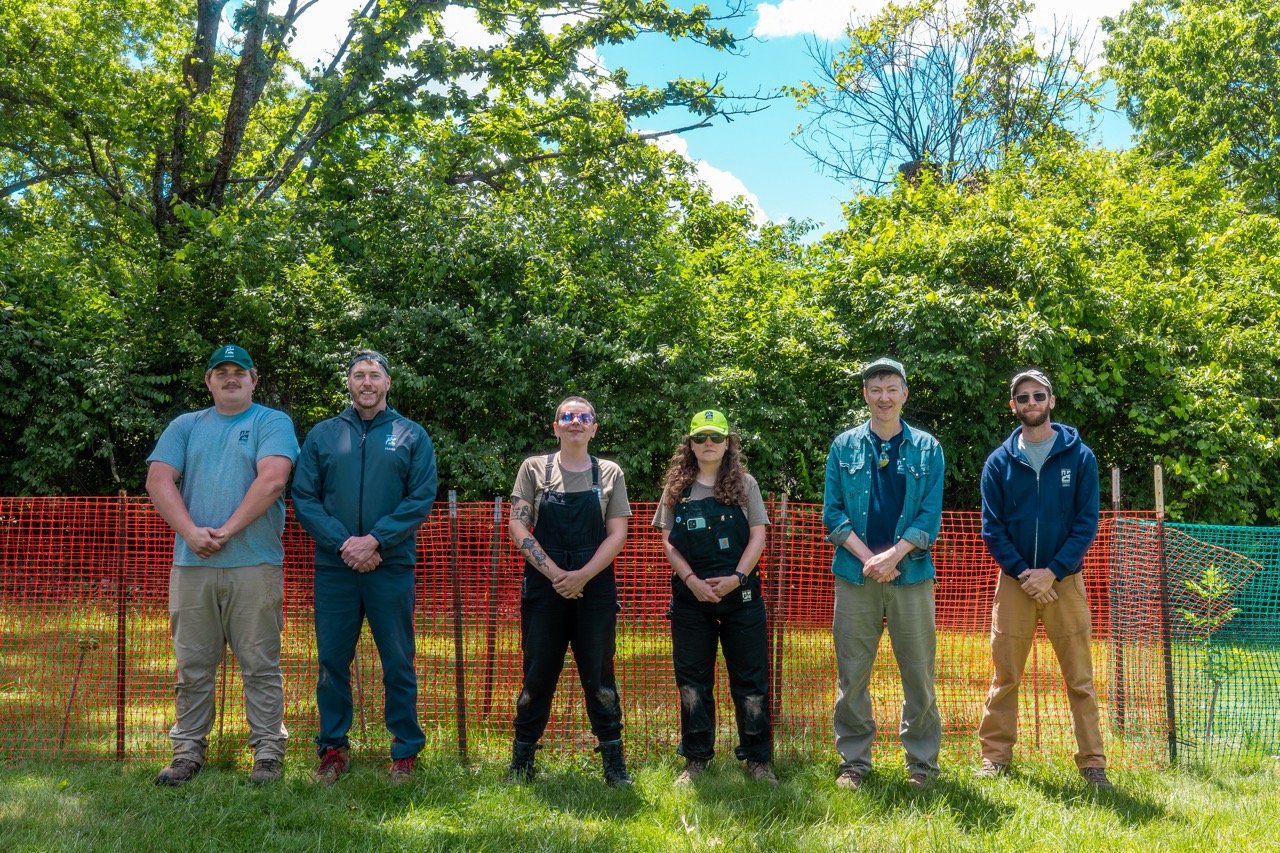The Teaching Forest

Following his article in Issue No. 50, The Learning Garden, our columnist explores another local way to get kids out in nature to learn and play.
Images by Kyle Wolff
Young voices carry through Parkers Woods in Cincinnati’s Northside neighborhood. Their chatter mixes with cardinal calls and nuthatch notes, the rattle and rasp of birch and oak leaves clinging to soon-to-be green limbs. The children are thoroughly enjoying themselves.
I’m here to observe an outdoor after-school class for Parker Woods Montessori students ages 5 to 12 conducted by Emerging Sprouts Forest School. The group, led by Forest School founder and director Emma Emmerich, with help from two interns, follows the contours of a creek bed to a clearing.
The students duck and climb over fallen logs. It’s been a spring of strong winds and storms, including a big one the night before. Near the clearing, where the creek bed widens, there’s the high, upturned root ball of a recently downed sycamore, soil still clinging to its root fibers. I reach the group after an ungraceful skid down a mud embankment. Emmerich coaxes the children into a circle where they engage in an important part of Emerging Sprouts: discussing and deciding, as a collective, what happens next.
In her knit cap, trail gear, and a light backpack, Emmerich has an easy, athletic confidence in the woods. She’s both playful and intensely focused on her charges, no easy feat with the forest calling out to 12 eager attentions.
Two Models for Outdoor Education
Emerging Sprouts Forest School combines two educational philosophies: There’s the forest school philosophy, which began in 1950s and ’60s Scandinavia and has since spread globally, and there’s the Reggio Emilia approach, a community-based, co-creative framework for early childhood education that evolved in postwar Italy. Co-creative means the children are active in creating their own curriculum. Reggio Emilia has gained international renown and inspires widespread emulation for the quality of education it provides.
Emmerich’s own path to facilitating nature-based education began, she says, with her own childhood rich in outdoor experiences: formative years spent playing in creeks near her College Hill home and attending year-round programming and nature camps at the nearby LaBoiteaux Woods Nature Center. She went to Clark Montessori, where her senior project focused on early childhood education. But it was during four summers as an assistant camp director at Cincinnati Nature Center’s Long Branch Farm & Trails property where all those experiences coalesced into a calling.
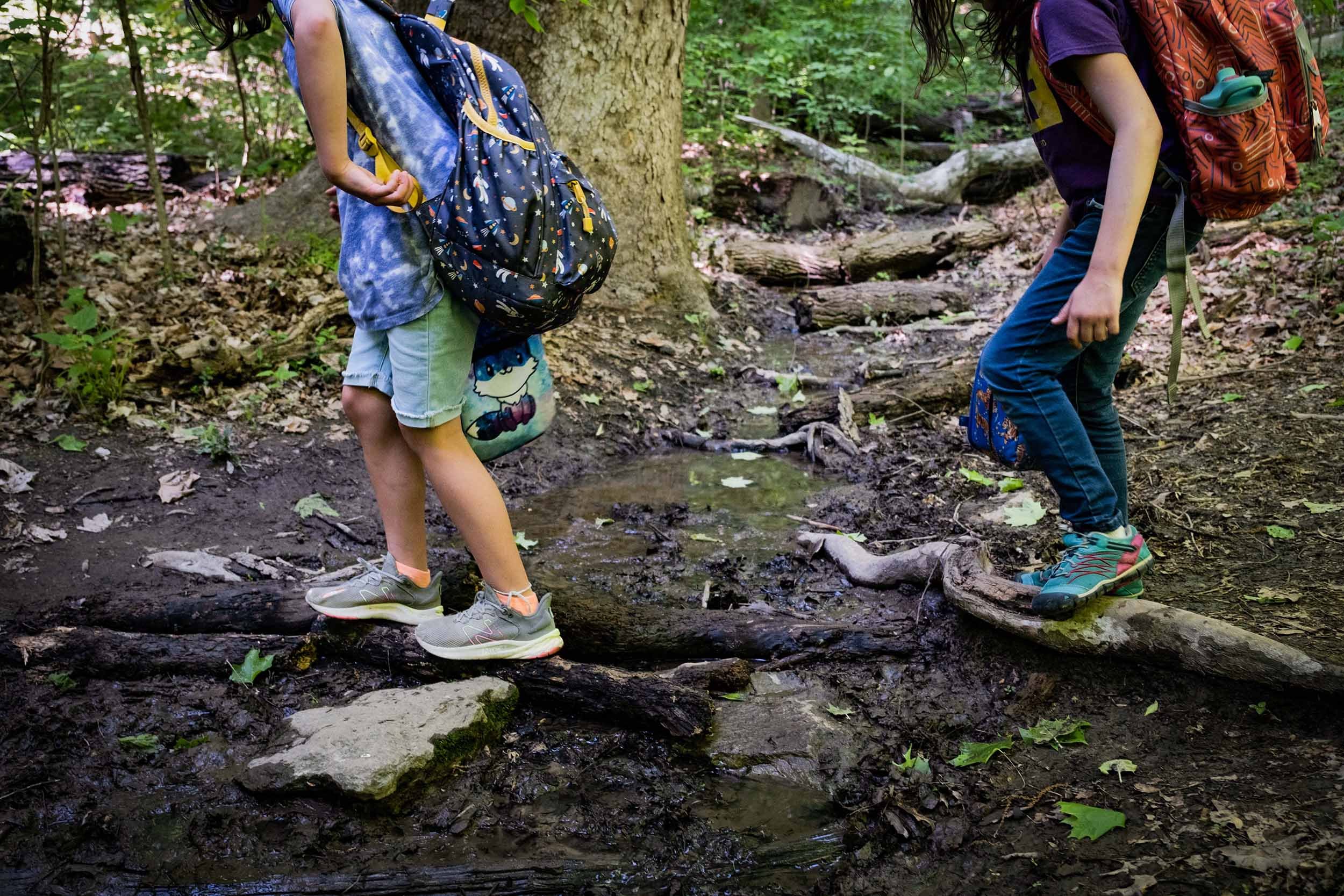

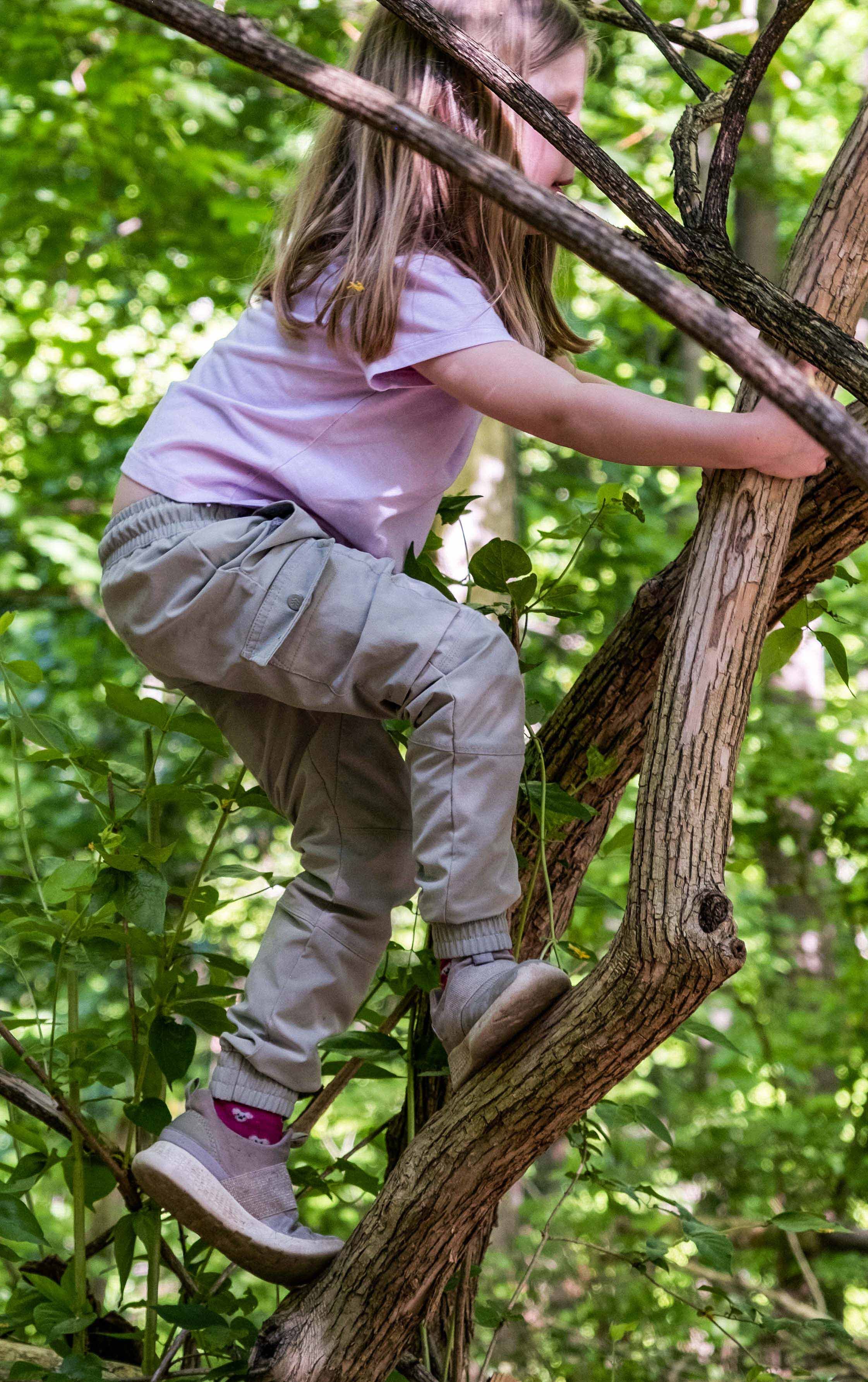
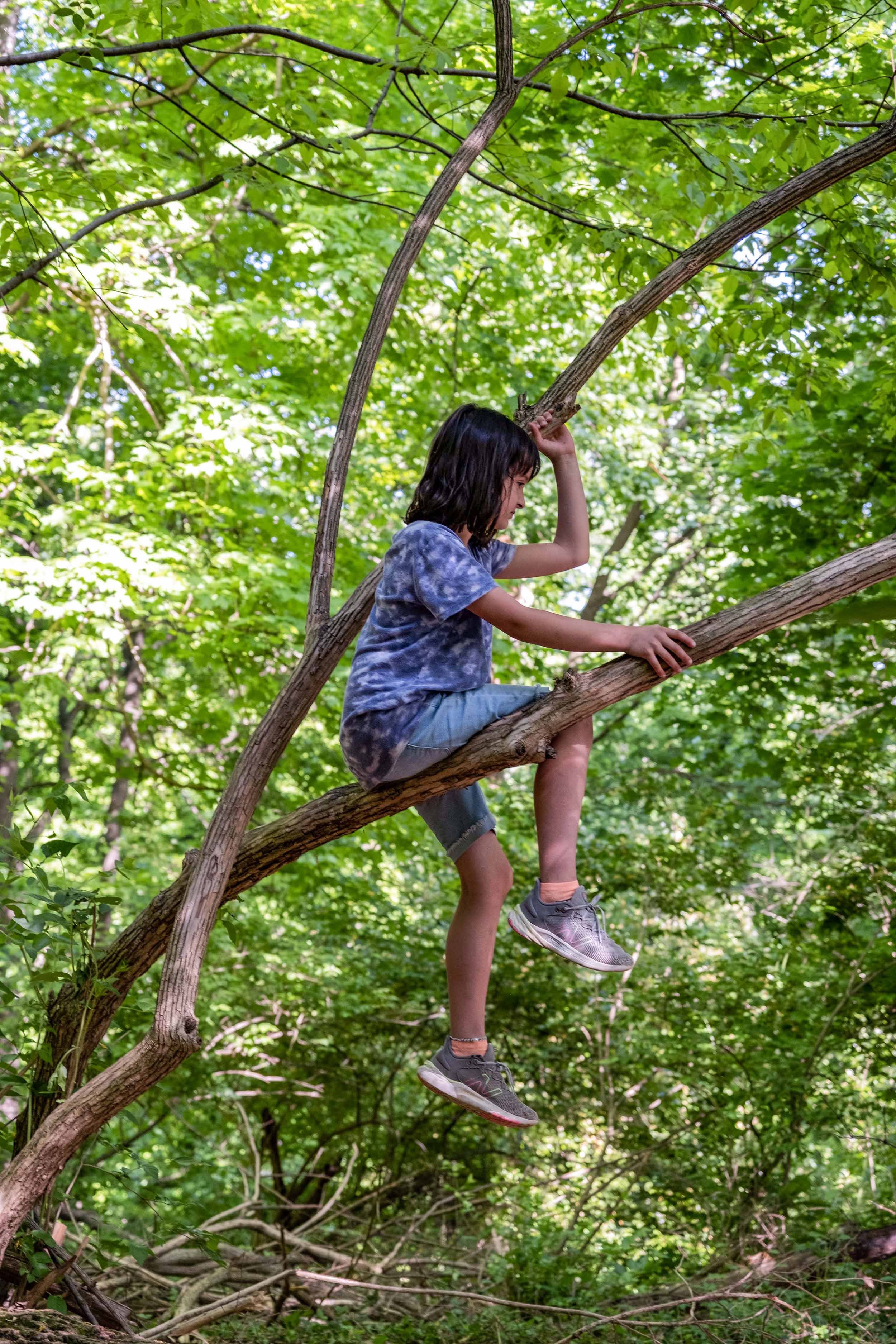

“That was when I first realized leading groups on trails and being outside with children is so important to me,” she says. “I knew I wanted to work with kids.” She went on to study early childhood development at San Francisco State University in California, where she worked at both indoor and outdoor preschools.
“What I noticed when I was working in indoor spaces, is there was never enough time dedicated to being outside. It was similar to how public schools are structured now, where it’s like, there you go, break for recess, and that’s maybe 30 minutes outside.”
That imbalance between indoor and outdoor time, and an awareness of diverse needs among the students—how many of them, including some with learning difficulties, found indoor learning difficult but thrived outdoors—led her to open Emerging Sprouts Forest School in Berkley, CA, in 2017. She adopted the forest school model, rather than the farm school, which she also initially explored; The logistics of transportation for a farm school became a project unto itself, she says, whereas the forest school model allowed Emerging Sprouts to partner with parks and other entities, and host classes closer to where families needed them.
Emmerich returned to Cincinnati in 2021 to open a chapter of Emerging Sprouts here. In addition to partnering with Cincinnati Public Schools, this summer they will offer preschool and kindergarten programs. They are currently building additional partnerships with nature preserves, parks, and farms. Beginning this fall, Emerging Sprouts Cincinnati is offering five-day preschool and kindergarten classes using the same model they provide in Berkeley, where students dress in waterproof gear, tote their own backpacks, learn, play, socialize, and explore outdoors.
Discussing, Deciding, Exploring
In the clearing, the circled children work toward a consensus on what they’d like to do next. “Cross your arms if you want to go to the forts, and put your hand on your hip if you want to go to the root ball,” Emmerich says. The group weighs in. It’s forts first, then root ball later. She talks them through how to safely climb the hillside, outlining a safe route around fallen branches. With an intern standing guard where the hill is steeper, they ascend.
Both the forest school philosophy and Reggio Emilia approach encourage the child’s innate abilities as an explorer. The Reggio Emilia mode of learning actually considers the environment a “third teacher” alongside the adult and the child herself. And it considers the social milieu, the group dynamic, central to learning and development. In the Reggio Emilia approach, children’s inquisitiveness is closely observed, even documented and recorded to inform teachers’ roles in the process, for example, to connect students with educational resources appropriate to their interests.
Neither the forest school philosophy nor the Reggio Emilia approach is a fixed, rigidly defined methodology. They adapt to students’ and groups’ unique interests, abilities, cultures, and to their environment and social setting. What happens outdoors, freely chosen, is also used to inform indoor classroom curriculum and can even be applied to teaching state standard curriculums.
Both philosophies, Emmerich says, “are based on a more hands-on approach to education in general.” In her 15 years as a child development specialist and preschool teacher she’s seen how getting hands on in a real-world setting can help students solidify a tenuous hold on classroom-taught concepts. “Once they were outside in the field with us, they would quickly understand, for example, the water cycle, because they could see it, and so quickly understand evaporation, erosion, angles, how these pieces tie into mathematics and science,” she says. “They become so real when the student is in a hands-on learning environment.”
Three dome-like forts woven from sticks stand on the leeward side of a ridge above the creek. Neighborhood volunteers, including some parents whose children participate in Emerging Sprouts, have recently cleared honeysuckle from the forest floor. Curved lengths of clipped honeysuckle become toys, tools, even instruments as children pry at an old log and drum on it. The dozen students fan out in clusters. Emmerich helps one young person find a place in a group. Another student becomes an archaeologist, uncovering bricks from a structure that once stood here, and a fragment of a ceramic jug. Emmerich encourages her to ask questions, to pose theories. All are enticed into considering the causes and effects of the natural and human phenomena, both visible and hidden, in their infinite classroom.
Forest schools have gained ground in the U.S. following the interest in outdoor education spurred by, among other proponents, Richard Louv’s 2005 bestseller Last Child in the Woods: Saving Our Children from Nature Deficit Disorder. While Emmerich feels Louv’s book does a good job of highlighting a disturbing trajectory, it falls short on addressing issues of access for disadvantaged kids. Certainly, forest schools have become an inviting option for families of means.
“More families are asking questions about the education of their students, because they’re also experiencing a need for a different type of education,” Emmerich says. “That could be because your student is possibly not one of those students who can just sit all day. But that could also be because you were homeschooling for two years during the pandemic, and you understood for the first time as a parent what is happening, and what is not happening, in a traditional public school. And so I think the coupling of these two things is really important when we think about, how is the school system serving families and how is it not serving families?”
A Community Approach to Learning
“Cincinnati has exceptionally good public schools,” she continues, crediting staffers at Parker Woods Montessori for welcoming Emerging Sprouts into their community as a school partner. Working closely with public schools is central to Emerging Sprouts’ mission of addressing accessibility gaps for families interested in forest schools but that face obstacles like financial resources, time, and transportation. They also encourage parents to volunteer in the classroom, when possible, even if that’s as little as one day a month.
“What would it look like for our public schools to really take the needs of the whole family into consideration?” Emmerich asks. “Because so much of our school system is built on the post-Industrial Revolution. And that’s not where we are as a country right now. We have different needs than that. And I think that is reflected in our current school system. So it’s an opportunity for us to ask what would it look like to have education systems that really serve the families? What are the needs of the families? And start there.”
Forest schools and the Reggio Emilia approach began by filling that gap and making education accessible to working families.
Forest schools sprouted up around Copenhagen in 1952 after Danish mother Ella Flautau assembled an informal preschool in the woods near her home. Danes took a keen interest, in no small part because more women were entering the workforce and good childcare was in short supply. Today about 10% of Danish children attend some version of Danish forest school—naturbørnehaven, also known as “walking kindergartens.”
The Reggio Emilia approach was an equally community-driven endeavor, filling a need among working parents in the Reggio Emilia region of Italy. It began in preschools started by the Italian Women’s Union as an alternative to church- and state-run institutions. Fascism and totalitarianism were all too fresh in the parents’ memories.
The question on their minds in postwar Italy, Emmerich says, was, “What kind of education system do we need for our citizens to never be taken into a totalitarian regime again? What do we need to do to create critical thought? What do we need to do to create citizens that are involved in their own country and their own communities? And that’s also why [the Reggio Emilio approach] emphasizes not just the individual, but the group,” Emmerich says. “I think that’s very important to the premise of the school.”
Near the forts in Parkers Woods, the children’s imaginations are at play. They’ve opened a portal to another dimension. The multidimensionality of their minds, the leaps and directions they take—these make up the most splendid tree.
Contrast their esprit de corps with a contemporary America in which certain school boards seek to espalier young minds, actually forbidding books and critical thought. It seems no coincidence that educational psychologist Loris Malaguzzi, a founder of the Reggio Emilia approach, articulated the infinite ways children think and learn as “the Hundred Languages of the Child”—at a time when Mussolini attempted to suppress regional Italian dialects in the name of a unified, nationalistic Italian language. To weaponize children as part of some larger culture war would be unforgivable. But to recognize the divergent and nuanced needs of young human beings is to support a human diversity that is just as essential to our survival as biodiversity. Letting them grow up in nature means they will grow up to love and defend a biodiversity threatened by entrenched systems.
But that’s too much to put on their shoulders. Let children be children. Let them open portals to their own better futures.
Ever since his grandfather put him to work squashing potato bugs and shoveling compost in a vast organic garden north of Philadelphia, Cedric has loved the outdoors. These days, he squashes bugs for his green-thumbed partner, Jen. His writing has appeared in Saveur, Cincinnati, This Old House, and Belt magazines. He is the Collector at the Mercantile Library Downtown.


